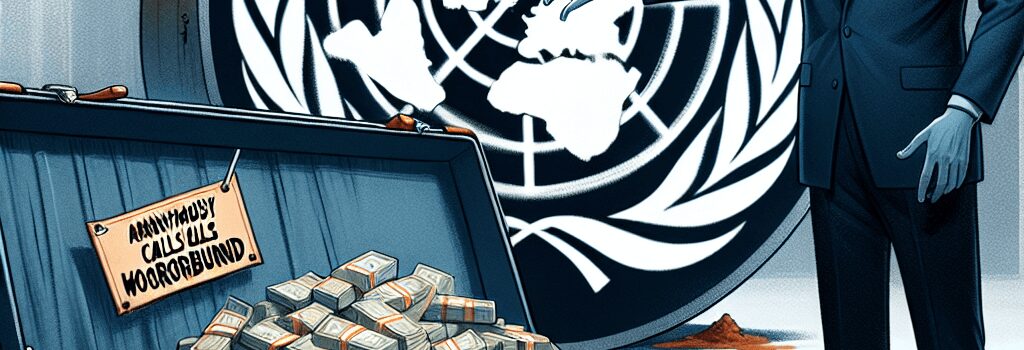RFK Jr. Calls WHO ‘Moribund’ as China Offers $500M Support

The 78th World Health Assembly (WHA), held from May 19–24, 2025 in Geneva, spotlighted a widening leadership and funding void at the World Health Organization (WHO). After the United States formally withdrew on its first day of the Trump administration in 2017 and has not remitted an estimated $260 million in assessed dues for 2024–2025, member states scrambled to fill the shortfall. Amid this backdrop, public health dissident Robert F. Kennedy Jr. delivered an abrasive six-minute video address condemning WHO as “moribund.” Simultaneously, China announced a $500 million, five-year injection to shore up WHO’s core programs.
China’s Landmark $500 Million Pledge
Vice Premier Liu Guozhong declared on the WHA floor that China will allocate $500 million across 2025–2030 to WHO’s Health Emergencies Programme, digital surveillance systems, and capacity building in low-income countries. Key technical targets include:
- Digital Health Infrastructure: Upgrading the WHO Health Data Hub—an Azure-backed platform using HL7 FHIR and openEHR standards—to improve real-time case reporting and genomic surveillance.
- Laboratory Network Expansion: Equipping 50 national labs with next-generation sequencers (Illumina NovaSeq 6000) and training 2,000 technicians in biosafety level 3 and 4 protocols.
- COVAX & ACT-A Support: Funding 200 million additional vaccine doses and strengthening the Access to COVID-19 Tools Accelerator’s procurement pipelines.
“Only with solidarity and mutual assistance can we create a healthy world together,” Liu stated, decrying unilateralism and power politics as threats to global health security.
RFK Jr.’s Abrasive Critique of WHO
Despite the U.S. disengagement, Robert F. Kennedy Jr. appeared via a pre-recorded MP4, employing jump cuts and a minimal background to emphasize his outsider status. He lambasted WHO as “mired in bureaucratic bloat” and accused it of corporate medicine bias. Kennedy further promoted his Make America Healthy Again platform and urged other health ministers to join an alliance abandoning WHO, though he provided no implementation roadmap or cost analysis.
- Censured WHO for allegedly downplaying lab-leak theories and amplifying the “bat origin fiction.”
- Called for radical agency overhauls akin to the Trump administration’s federal restructuring.
- Invited global counterparts to form a parallel health cooperative outside WHO’s framework.
Adoption of the First Global Pandemic Treaty
In stark contrast to isolationist overtures, 124 member states ratified the WHO Pandemic Agreement—no votes against, 11 abstentions. The treaty codifies enhanced International Health Regulations (IHR) obligations:
- Early Warning Standards: Mandatory 24-hour reporting for novel pathogen detections using integrated GIS dashboards.
- Data Sharing: Secure exchange of genomic data via WHO’s Pandemic Data Repository, leveraging end-to-end encryption and blockchain anchors for provenance.
- Capacity Benchmarks: Minimum staffing and equipment levels for tiered laboratories, with biennial external audits.
WHO Director-General Tedros Adhanom Ghebreyesus hailed the treaty as a “victory for public health, science and multilateral action,” emphasizing that it strengthens global preparedness against future threats.
Technical Challenges in Global Health Data Exchange
While the treaty sets ambitious digital reporting timelines, experts caution about real-world constraints:
- Interoperability: Many low-resource countries still rely on paper records or legacy EHR systems incompatible with HL7 FHIR.
- Connectivity: Satellite or 3G networks in remote regions introduce latency and data loss, hampering near-real-time analytics.
- Cybersecurity: The rise in ransomware attacks against healthcare makes end-to-end encryption and zero-trust architectures non-negotiable, yet underfunded.
Expert Opinions on Multilateral Funding and Governance
Dr. Michael Ryan, Executive Director of WHO’s Health Emergencies Programme, praised China’s contribution but warned: “Diversifying donor portfolios is critical to avoid overreliance on any single state actor.” Former WHO Chief Scientist Dr. Soumya Swaminathan called for transparent earmarking of funds and strengthened public-private partnerships to foster innovation in vaccine R&D.
US Policy Developments: Potential Re-engagement
Latest reports indicate that a bipartisan Senate resolution, part of a wider Pandemic Preparedness Act under debate, may restore assessed contributions and rejoin WHO by 2026. A White House memo leaked in April 2025 suggests the Biden administration is weighing conditional re-entry, contingent on governance reforms and budgetary oversight mechanisms.
Looking Ahead
The WHA outcomes underscore a turning point in global health governance. As digital tools become central to pandemic response, the balance between funding, sovereignty, and technological interoperability will define WHO’s efficacy. Whether the US returns or alternative health coalitions form, the next five years will test the multilateral system’s resilience in the face of evolving biological and political threats.